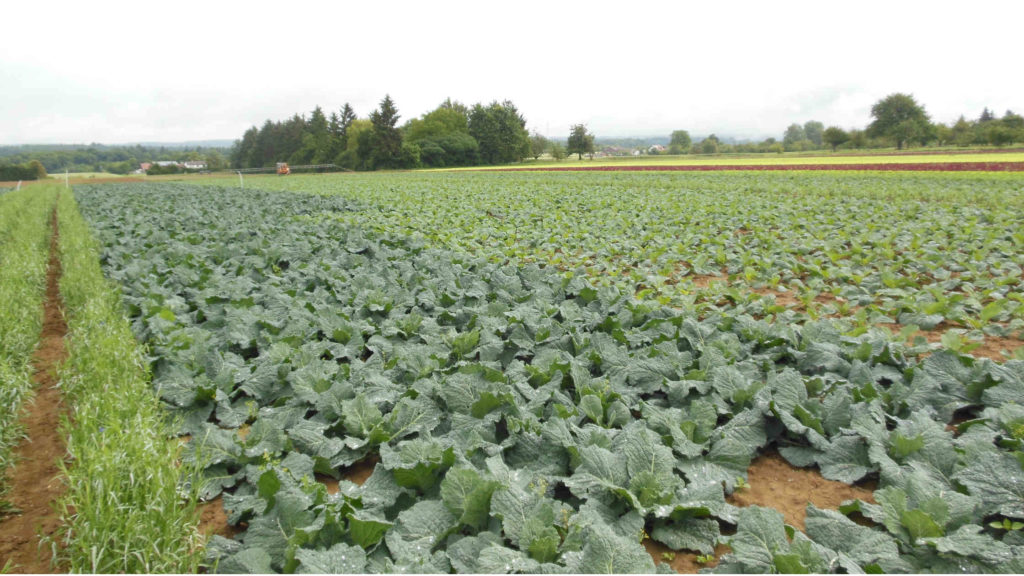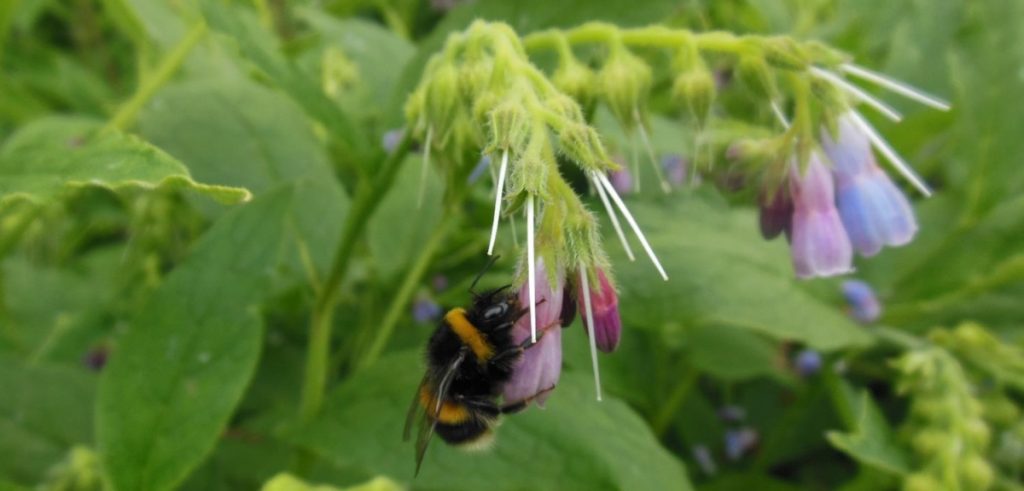Most people would equate “managing pollinators” to beekeeping. Which means working with a managed pollinator, i.e. the Western honey bee, Apis mellifera. Which isn’t the meaning I’m referring to here. This month, we’ve been talking about agriculture and how it depends on pollination. I tried to clarify how much crop production depends on biodiversity, gave examples for the economic value of pollination, and one on how bees and other insects are encouraged in farmland.
In this context, managing pollinators isn’t the same as beekeeping. Absolutely not. It’s about that there is the necessary diversity of pollinators at the right time. Flowering strips that bloom in late summer won’t attract the early flying mining bees that pollinate apple trees. This has often been an argument for “honey bees are the most important pollinators in agriculture”. What a fallacy. It’s not about the quantity of bees you can bring somewhere. But about the quality of pollination they provide for the crop. Knowing that this is teamwork between a variety of different pollinators, makes clear that we need a different approach.
Integrated Pest and Pollinator Management
If you have read more than one of the articles in this blog, chances are you know how much I dislike simplifications. There are common principles for helping bees in farmland, based on what they need. However, the concrete measures will be different for every crop and every region. This means, an apple orchard in Northern Germany or in South Tyrol will need different measures for encouraging the pollinators specific for these regions. This is true also for Northern or Southern Germany. As Egan and co-authors put it in their highly interesting paper:
Strategies such as these are, however, greatly required, given that crop- or location-specific demands may frequently call for careful tailoring of floral and habitat composition.
Egan et al. 2020
The paper lets this series also come full circle because it integrates an aspect we didn’t yet talk about: pest management. It’s the most discussed aspect when it comes to bees and agriculture. Listening to many who want to save the bees, it seems that just banning all pesticides would solve the problem. Guess what. It won’t. That’s why I address this aspect only in this very last post of the series.
With the strategies in the quote, the authors of the paper mean Integrated Pest and Pollinator Management (IPPM). This concept broadens IPM (Integrated Pest Management), adding pollinators into the equation. In the link above you find a nice video explaining the main concept. IPM means to reduce pesticides and use physical and biological measures for pest control first. However, these measures can affect pollinators. In the other hand, measures that help pollinators may create pest problems – like weeds or insect pests. Therefore, a more holistic model like IPPM is highly needed.
Toolboxes for managing pollinators and pests
This paper made me think of a study I helped out in at the very beginning of BeeSafe. It was a project to study if natural enemies of cabbage pests could be encouraged by planting rows of cornflowers between the rows of cabbage. I only took on a sampling day another freelancing colleague couldn’t do this work, so I don’t know anything about the results. However, it’s an example for crop-specific measures – the cornflowers were meant to attract natural enemies of specific cabbage pests. They’re also attractive for some pollinator species.
The paper of Dainese et al., to which I referred in the first post of this series, also analysed if farmers profit from biodiversity when it comes to pest management. They do. The effects weren’t as strong as with pollinators, but they were there. Therefore, a more complex landscape, more structures, more habitat – all that helps natural enemies, too. And helping them increases crop production. Every region, every crop is different. That’s why I talk about common principles, but flexible measures. The common principle may be “provide nesting habitat for ground-nesting bees”. But this habitat will look different in Northern Germany or South Tyrol, to stay with that example.
The IPPM approach promotes diversity at all levels: crop, field and landscape. It brings together managing pollinators and pests for the good of agriculture and biodiversity. It’s a tool box. For each case, you chose a different tool. It’s more complex than the scattergun approach of using flowering strips with a limited number of seed mixes everywhere.
Education, consulting and community
There was another thing I liked about the IPPM concept as presented by Egan and colleagues: it includes education, consulting and the community aspect.
[…] direct practical demonstration is key to encouraging farmers and advisers to take up new practices or concepts.
Egan et al. 2020
This week, I participated in two meetings that criticized the low awareness for environmental problems. Referring to farmers, but also society in general. I don’t think that’s the problem. Everybody knows about the problems we’re facing. Most of us, also farmers, care about them. But there’s a gap between the knowledge about the problem and about how to do something about it. That’s why throughout this series I’ve been insisting so much on consulting. For each specific case.
Don’t forget also the community aspect. New practices will be easier to implement if some respected practitioners or consultants show that it works. I see this very often in beekeeping associations: In regions where you see low standards, the association isn’t very engaged in promoting good practices. Or, there are many beekeepers that aren’t organized in the association. I know similar examples also from farmers. Knowing somebody who has the same problem and successfully uses a new concept is the best method to get these into practice. It’s teamwork between farmers, beekeepers, conservationists, consultants, and scientists. Ideally, in a political framework that allows flexible, carefully tailored measures.
This post is part of a series on bees and agriculture. In November of 2020, I discuss four recent papers on the topic. It’s a complex area, much more than you could think hearing the discussions on “save the bees”. Agriculture needs biodiversity, needs pollinators, and, therefore, bees. If you need help in figuring out how this could look like for your association or region, contact me. You can do this over the contact page or follow me on my social media accounts.



